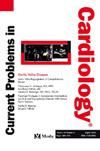Hospital mortality due to infective endocarditis: Analysis of risk factors in a developing country
IF 3
3区 医学
Q2 CARDIAC & CARDIOVASCULAR SYSTEMS
引用次数: 0
Abstract
Introduction: Infective endocarditis (IE) is a disease with high mortality that, in recent decades, has experienced changes in its epidemiology, pathogenesis, and microbiology. Therefore, understanding its landscape and risk factors for mortality is essential. Objective: To identify the epidemiological, clinical, laboratory, etiological, and echocardiographic profile of patients hospitalized with IE and to determine predictors for in-hospital mortality. Methods: This was a retrospective observational study that analyzed medical records of patients hospitalized for IE in a tertiary center from 2007 to 2023. Patients with a definitive diagnosis of IE according to the Duke criteria were included, while those without a definitive diagnosis, those transferred from other facilities, and minors were excluded. Univariate logistic regression was performed to assess the effect of each variable on in-hospital mortality, with a p-value considered significant if below 0.05. Results: A total of 49 patients were included, most of whom were male (67.4%) with a mean age of 55.5 years. The main etiological agent was Staphylococcus spp. (56.66%), and the mitral valve was the most affected (60.86%). Stroke occurred in 28.57% of patients, and the in-hospital mortality rate was 36.7%. Identified predictors included prior stroke (p=0.017), stroke during hospitalization (p=0.015), and length of hospital stay (p=0.01). Conclusion: IE leads to high mortality, with prior stroke, stroke during hospitalization, and length of hospital stay identified as predictors of in-hospital mortality.

感染性心内膜炎的住院死亡率:一个发展中国家的危险因素分析。
感染性心内膜炎(IE)是一种高死亡率的疾病,近几十年来,其流行病学、发病机制和微生物学都发生了变化。因此,了解其状况和死亡率的危险因素至关重要。目的:确定IE住院患者的流行病学、临床、实验室、病因学和超声心动图特征,并确定院内死亡率的预测因素。方法:这是一项回顾性观察性研究,分析了2007年至2023年在某三级中心因IE住院的患者的医疗记录。根据杜克标准明确诊断为IE的患者被纳入,而那些没有明确诊断的患者、从其他机构转来的患者和未成年人被排除在外。采用单变量logistic回归评估各变量对住院死亡率的影响,p值低于0.05认为显著。结果:共纳入49例患者,以男性居多(67.4%),平均年龄55.5岁。主要病原为葡萄球菌(56.66%),以二尖瓣感染最多(60.86%)。卒中发生率为28.57%,住院死亡率为36.7%。确定的预测因素包括既往卒中(p=0.017)、住院期间卒中(p=0.015)和住院时间(p=0.01)。结论:IE导致高死亡率,既往卒中、住院期间卒中和住院时间是院内死亡率的预测因素。
本文章由计算机程序翻译,如有差异,请以英文原文为准。
求助全文
约1分钟内获得全文
求助全文
来源期刊

Current Problems in Cardiology
医学-心血管系统
CiteScore
4.80
自引率
2.40%
发文量
392
审稿时长
6 days
期刊介绍:
Under the editorial leadership of noted cardiologist Dr. Hector O. Ventura, Current Problems in Cardiology provides focused, comprehensive coverage of important clinical topics in cardiology. Each monthly issues, addresses a selected clinical problem or condition, including pathophysiology, invasive and noninvasive diagnosis, drug therapy, surgical management, and rehabilitation; or explores the clinical applications of a diagnostic modality or a particular category of drugs. Critical commentary from the distinguished editorial board accompanies each monograph, providing readers with additional insights. An extensive bibliography in each issue saves hours of library research.
 求助内容:
求助内容: 应助结果提醒方式:
应助结果提醒方式:


